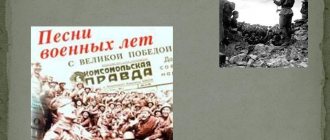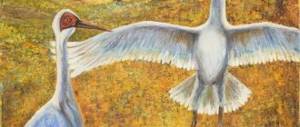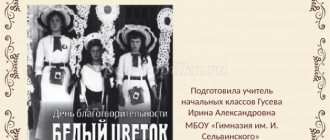Genealogy. Family tree
Genealogy is the science of a person's family and all his family connections with other people. The word genealogy was formed from the ancient Greek words “genea” - family and “logos” - science, knowledge. Since every person comes from someone, this science is of interest to many. After all, everyone will be curious to know who their distant ancestors were.
Genealogy is a kind of knowledge of the world. By studying the history of a family, a person better understands the history of the country, learns the cultural customs and traditions of different eras.
A family tree is a short but most visual representation of family history in the form of a tree that helps to trace all family relationships. It takes a lot of effort to “grow” it. Sometimes this takes years. Sometimes it is possible to look back three, four, or even five centuries.
Since ancient times, the family tree was compiled by the eldest people in the family, and then passed on from generation to generation. The family tree was and is one of the most valuable family heirlooms in the family - nothing can be more valuable than the memory of one’s family, of those from whom we descended.
Types of family trees
Family trees are divided into ascending and descending. Their definitions were given by L.M. Savelov.
In the ascending tree, the main object of research is the person about whose ancestors information is being collected. They begin collecting information from him, and then move along ascending steps or tribes, i.e. to father, grandfather, great-grandfather, etc. This type of tree is compiled when the researcher does not yet have enough information and it is more expedient for him to move from the known to the unknown.
When a sufficient amount of materials has already been collected and the ancestors of a given person have been identified, they proceed to compiling a descending tree, i.e. start with the most distant known ancestor and gradually move on to its descendants. This tree is more convenient for reference and more clearly shows the overall picture of the life and activities of the clan, starting from more distant times and gradually unfolding until the last days.
Ascending and descending trees are masculine and mixed.
In the male descending tree, all the descendants of a given ancestor are indicated, but those descended only from men; female representatives of the clan are represented by the names of their spouses.
A mixed-descending tree indicates all the descendants of a given ancestor, descended from both men and women. This tree is not a tree of one surname because it covers a large number of genera. It is necessary to clarify family ties between lateral relatives.
A man's ascending tree will look like a line because there will be one ancestor of that person in each generation. This pedigree is used to prove a person’s family connection with some famous historical figure distant in time.
A mixed-ascending tree indicates all the direct ancestors of a given person in the male and female lines. Such a tree always has a fairly regular shape graphically, because in the first knee one person is indicated, in the 2nd - two, in the 3rd - four, in the 4th - eight, etc. in geometric progression. Moreover, each of these persons in one tribe belongs to a different family, so that in the fourth tribe we have representatives of eight different families, and in the fifth - already sixteen, etc.
Thus, there are the following types of family trees:
- the descending male tree is the most common and the only one accepted in scientific works;
- descending mixed tree - all ancestors are indicated, including brothers and sisters, necessary to identify family ties;
- ascending male tree - only direct ancestors in the male line are indicated;
- ascending mixed tree - direct ancestors in the male and female lines are indicated, i.e. grandparents, great-grandparents, great-grandparents, etc.
Conclusion for chapter 1:
Genealogy is the science of a person's family and all his family connections with other people.
Family trees are divided into ascending and descending. Their definitions were given by L.M. Savelov.
Class survey
I conducted a survey of 5th grade students of the Verkhniy Avzyan Secondary School on the topic “The History of My Family.” (Appendix 1) We will now consider the results of this survey: The first question I asked. This
1. Are you familiar with your family history? Most children are partially familiar with their family history.
Second question 2. Who told you about it? And as a result, all family members told my classmates about the story.
And the third question was. Does your family have a Family Tree? Most answered no. I have a family tree of my family (Appendix 2).
How to correctly draw a family tree: template, diagram
A family tree is a diagram of family ties within a family, sometimes, for convenience and beauty, depicted in the form of a tree with a trunk and crown.
IMPORTANT: In a big city, it is not always possible to regularly communicate even with your closest relatives. Most of us know or remember at most great-grandparents. Family ties weaken and are interrupted, but a person without a family is like a tree without roots, lonely and weak.
Family tree: example of artistic design.
Today there are a lot of sites on the Internet that allow you to create a template family tree with a photo using special programs. You can also download a frame for several photos and insert portraits of family members into it in Photoshop. It's fast, convenient and, of course, beautiful.
Family tree: example of a children's frame for Photoshop.
But drawing up a generic diagram with your own hands has a lot of advantages:
- You have the opportunity to spend time in the creative process yourself, with your relatives and children.
- You will pay tribute to your ancestors, return to the origins of your family, learn or remember many interesting and funny stories.
- If you make a diagram with photos, you will organize pictures of your family members.
- A beautiful and neat family tree is an interesting interior decoration.
- If you make a family tree with the birthdays of relatives, with the designation of the wedding days of the spouses, you will never forget to congratulate them.
So where to start? How to draw a diagram correctly?
First of all, you need to figure out what type it will have. After all, a tree is a conventional name. The pedigree can be depicted schematically, where male relatives are “leaves” in the form of squares, female relatives are round “leaves”, and the connection between them is indicated by branches - arrows. If a tree is created together with a child, it is worth considering its artistic design, depicting it in the form of a tree, cutting out and pasting photographic portraits of relatives on its branches. Next, decide what your pedigree will look like:
- Descending is the most common and convenient type. Such a tree begins to be compiled from the most distant relative. Usually, this is a man, since traditionally our family is passed down through the male line. The vertical “branches” of a tree pass down to its descendants, the family ties between them are indicated by horizontal “branches”.
- Ascending is a type of scheme that is used when there is little information about a person’s ancestors. In the “trunk” of the tree is the person for whom it is being compiled. And at the top, in ascending order, his relatives in past generations are placed. When drawing up a family tree with your child (and it most often ends with great-grandparents), choose this option.
Family tree: descending diagram.
Family tree: ascending diagram.
Now take a pen and notepad, try to remember your relatives, if necessary, their dates of birth, death, marriage dates, and other information. This may require raising documents. No matter how detailed a family tree is, it will not be possible to indicate on it all the information about relatives. If you take the issue seriously, make a card for each relative with all the information known and important to you. If you want to make an artistic family tree with photos, choose the ones you will use in advance.
Compiling my family tree
, a mixed-descending version of the family tree suited us , because
it contains more complete information about ancestors, both in the male and female lines. We managed to collect information about ancestors who lived in the 20th century. Unfortunately, many photographs and documents have been lost over time.
Progress of compiling the tree:
- I studied old documents and photographs.
- Interviewing relatives - these are grandmothers, great-grandmothers - their memories are especially valuable for research.
- Drawing up a family tree. In the descending mixed version, the trunk symbolizes a certain person in this work; this is my most distant ancestor, about whom information has been preserved, this is the father of my great-great-grandfather, large branches are my great-great-grandfathers and great-great-grandmothers, and smaller branches are my great-grandparents, etc.
The most distant ancestor about whom information has been preserved is the father of my great-great-grandfather, Alexey Ivanovich Efremov. He was born in 1874. A photograph has survived that was taken on December 24, 1938, a year before his death. On it are Alexey Ivanovich, Anastasia Dorofeevna with their daughter Ekaterina (that is, grandfather, grandmother and aunt of my great-grandmother). This photo is very valuable to us. My ancestor died in 1939. He was buried in Upper Avzyan. We are taking care of his grave.
The next branches are: my great-great-grandfather and his 2 brothers and 2 sisters.
Great-great-grandfather Efremov Ivan Alekseevich was born in 1901, died in 1967. He worked in gold mines. His wife, my great-great-grandmother Anna Leonovna Efremova, my great-grandmother’s mother, was born in 1903 and died in 1979. Her maiden name is Bykova. She was a housewife. Only during the war, when my husband was taken away, did I carry luggage. They had seven children. One of them, Mikhail, drowned in the Nugush River at the age of three. The remaining six grew up safely. Unfortunately, at this time only my great-grandmother is alive.
The next generation is my great grandmother, her 2 sisters and 4 brothers.
Great-grandmother Eremeeva Galina Ivanovna, my grandmother’s mother, was born on July 3, 1940. Maiden name Efremova. Her husband, great-grandfather Alexey Borisovich Eremeev was born on March 4, 1939.
This is the fourth generation that we know about, this is my grandmother.
Denisova Tatyana Alekseevna, born on October 16, 1968, also in the village of Verkhniy Avzyan, Beloretsk district of the Republic of Bashkortostan. Maiden name Eremeeva. She studied in Magnitogorsk, Chelyabinsk region.
For 10 years now, my grandmother has been working in the rural House of Culture. She is kind and sympathetic, at the same time strict and demanding.
My mother, Denisova Nadezhda Yuryevna, is a member of our family tree in the fifth generation.
Born on September 30, 1987 in the village of Verkhniy Avzyan, Beloretsk district of the Republic of Bashkortostan. The beautiful name Nadezhda is fraught with action, and only forward, in spite of all deaths. It comes from the ancient Greek name of one of the martyred sisters and means “hope.”
The secret of the name lies in its direct meaning. It became very popular in Ancient Rus', mainly among nobles. She first graduated from the Humanitarian College as a primary school teacher, then from VEGU as a social and cultural activity manager, then at BSU she underwent professional retraining in the specialty of oligophrenopedagogy. Now my mother works at a correctional boarding school, she organizes holidays for children.
Well, I am already the sixth generation of our tree.
My name is Denisov Alexey Vadimovich. I was born on July 9, 2008 in the village. Verkhniy Avzyan, Beloretsk district of the Republic of Bashkortostan. I am 11 years old. I study in the 5th grade at the secondary school in the village of Verkhniy Avzyan.
My mother named me Alexey in honor of my great-grandfather. This name comes from the Greek Alexios, which means “protector”.
I study willingly, I love mathematics, art, and English. I actively participate in all extracurricular activities. Last year, on October 28, he took the oath and became a cadet of the Syzran village Cossack society. I go to the gym. I am engaged in drill training, combat tactics and much more.
Favorite time of year is summer. Because summer is beautiful nature, it’s a family vacation, it’s a long-awaited vacation. These are hikes in the forest.
What I like in people is kindness, responsiveness, hard work and willingness to help others. I see these qualities in my parents and therefore I want to be like them in life.
My main dream is to successfully graduate from school and college and become a military man, like my great-grandfather Evgeniy Ivanovich Efremov.
My great-grandmother’s brother Efremov Evgeniy Ivanovich was born on June 10, 1925 in the village of Verkhniy Avzyan, Beloretsk district of the Republic of Bashkortostan. Of course, he no longer exists, but my great-grandmother and mother told me about him. D. Zhenya (as his mother called him) was born into a simple family: his father worked in the mines, and his mother was a housewife. He grew up as an ordinary child, loved to play the harmonica (even went to play it on school evenings).
In October 1942, village Zhenya was taken to the front. They took him straight from school (he was in 10th grade). Here his difficult service to his native country began.
When he was called to the front, his mother and children remained at home; in order to survive, she carried “luggage” to Tukan and back on a horse, brother Dmitry Ivanovich wove bast shoes. That's how we lived.
Evgeniy Ivanovich died on March 8, 2002. He was buried in Novosibirsk.
Our relative went through such a difficult path. He was a very inquisitive and hardworking person; he left in our memory a diagram of his life path and a family tree, which began with his grandfather, born in 1874. Evgeniy Ivanovich served his Motherland for 32 years! He received the rank of lieutenant colonel, and at the same time he had a family: a wife, children and grandchildren.
The most important thing I realized is that everything goes down in history. People's suffering, devastation, famine during the war and post-war years. Our generation only has the opportunity to touch the past war in the memories of living witnesses of that time.
My family traditions
Each family has its own traditions, which are passed on from the older generation to the younger. Family traditions help foster respect for elders and strengthen friendship between family members. Thanks to these traditions, the family becomes not only friendlier, but also happier, because they spend their free time together more often, because everyone cares and worries about each other.
In our family, as probably in many other families, home holidays have become a tradition. These are, first of all, the birthdays of relatives, for which we prepare in advance. After all, it’s always nice not only to receive gifts, but also to give them. We spend a long time choosing gifts: we want to pleasantly surprise and please a loved one. And the gift doesn’t have to be expensive. It’s not for nothing that people say that the main thing is attention.
It is traditional in our family to keep albums that reflect our entire lives. Leafing through the pages of such albums, one always remembers the lines from the famous song: “To remember what we were like, look into the family album.” After a while, I will also show my children photographs of my childhood, my friendly and happy family, the traditions of which will continue for more than one generation.
Conclusion for Chapter 2:
Having analyzed the results of the survey, we can conclude that in most cases, children are familiar with the history of their family first of all from their grandparents, then from their parents. But practically only a few people have a pedigree of their own family.
We don't know our roots well. This is our problem. After all, family pride and interest in the origins of one’s own ancestry are branches of the same tree. You cannot live without knowing your kinship; you cannot study the history of the Motherland in isolation from the history of your native land. After all, by studying the history of their family, everyone thus becomes acquainted with the history of Russia.
Conclusion
Pedigree research is real research. Studying the history of my clan, my family, I learned a lot of new and interesting things about life and historical events corresponding to each generation. I took a fascinating journey into the distant past.
I think in order to love your family, your ancestors, you need to know the history of the family, its joyful and tragic pages.
Much was a mystery to me. My mother and I were able to reach the 6th generation in the study. As I researched, I found out who my relatives were and what they did, and also compiled a family tree with interesting and famous people in their time.
I know for sure that my work is not over here, our family continues to live and prosper, which means we will need to constantly supplement the family tree.
I am proud of my family, my ancestors, my homeland.
I will grow up, and the pedigree compiled by me will be passed down from generation to generation by my children, grandchildren, etc., which means that the memory of our family will remain immortal.
Bibliography
- Children's encyclopedia. Story. "I'm exploring the world."
- How to make your own pedigree. V.P. Petrov, E.V. Petrova Ulan-Ude, 2005
- Khigir B.Yu. Encyclopedia of names. – Moscow: Yauza, 2003. – 512s.
- Internet resources.
- Recorded interview: Galina Ivanovna Eremeeva; Denisova Nadezhda Yurievna.
- Archival materials from the family album of the Efremov family: (photos; diagram of the life path of Efremov E.I., family tree).
Appendix 1. Class survey
I conducted a survey of 5th grade students of the Verkhniy Avzyan Secondary School on the topic “The History of My Family.”
You can see the results of this survey below.
1. Are you familiar with your family history?
2. Who told you about it?
3. Does your family have a “Family Tree”
Presentation “My Pedigree”
Tatiana Radchenko
Presentation “My Pedigree”
People, like trees, cannot live without their roots.
This is me – Vladimir Vladimirovich Radchenko. I was born on May 15, 2011 in Donetsk.
My family keeps a large photo album. The photographs show the beautiful, happy and young faces of my grandparents. For me they remain the closest people. I think that we need to know our roots in order to pass them on to our next generation, so that no one disappears in time.
Origin of the surname
The surname Radchenko is of Ukrainian origin, as indicated by the suffix –enko. The surname goes back to the verb “to please”
, i.e.
“to assist, to worry
. This word formed the basis of the nickname Radic. This is most likely the name given to a responsive, empathic person. Radic eventually received the surname Radchenko.
My parents
My dad's name is Vladimir Anatolyevich. He was born on August 11, 1979. He works as an economist. Dad loves to spend time with his family and often organizes small holidays for us. I'm proud of him!
My mother's name is Tatyana Mikhailovna. She was born on November 14, 1985. My mother is a teacher by profession, but now she works as a kindergarten teacher. Mommy is a great housewife and needlewoman.
Paternal grandparents
Radchenko Tamara Fedorovna. Born on February 15, 1951 in the Bryansk region.
My grandmother is a mathematics teacher; she worked as a head teacher at school for 38 years. Toma, as I call her, is strict and demanding, always loves to educate (including me)
.
Malakhov Vladimir Anatolyevich was born on June 28, 1949. Grandfather is a very sociable person. He worked in the North for many years.
My aunt (my dad's sister)
Shultz Irina Anatolyevna.
Born January 1, 1975.
Works as a dispatcher at a railway station.
He is interested in knitting. Her dream is to live at sea.
My cousin Shultz Ivan Igorevich was born on October 19, 1993.
Origin of the surname Goncharov
The surname Goncharov is derived from the nickname Gonchar. It originates from the common noun “potter”
- “a master who makes products from baked clay
(dishes, toys, etc.)
.”
Most likely, the nickname refers to the so-called “professional”
naming, containing an indication of the activities of the founder of the surname.
Grandparents on mom's side
Goncharov Mikhail Fedorovich was born on November 16, 1958. He is a builder. He built a huge number of multi-storey buildings in our city.
Goncharova Galina Vasilievna was born on February 2, 1961. My grandmother is a cook by profession. She has been working in a canteen for over 35 years, feeding children.
My uncle (my mother's brother)
Goncharov Vladimir Mikhailovich was born on April 29, 1989. He is my godfather, strong and hardworking.
He is interested in agriculture. Loves animals very much.
Works as a conveyor operator at a crushing and processing plant.






